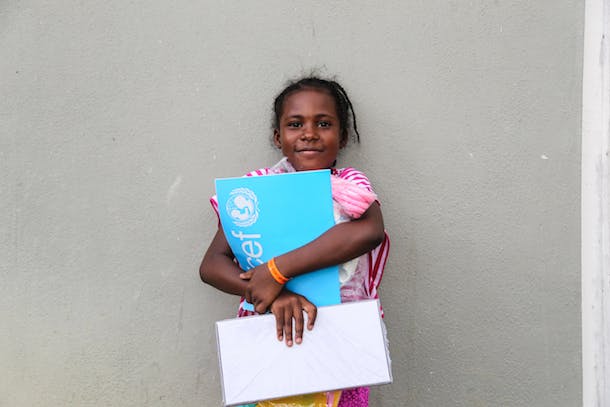
In the Zaatari refugee camp in Jordan, a group of girls who have had to flee their homes in Syria dream of their futures. Known as the TIGER Girls, which stands for “These Inspiring Girls Enjoy Reading,” they want to be teachers, doctors, lawyers, and engineers. Yet it’s hard to go to school – there is not enough resources and capacity for every child to get a quality education.
Goal 4 of the Sustainable Development Goals is to ensure an inclusive, quality education for all. Yet, the education of children in emergency situations – like natural disasters and conflicts – often comes as an afterthought behind protection, food, water, and shelter. With the highest level of displacement since World War II, millions of children’s lives remain in limbo, often without access to education. To reach each SDG by 2030, funding for education for children in crises needs to be a top priority.
“Investing in education is the most cost-effective way to drive economic development, improve skills and opportunities for young women and men, and unlock progress on all 17 Sustainable Development Goals,” Secretary-General Antonio Guterres said at the United Nations General Assembly. “Financing education is indeed the best investment we can make.”
While the UN is actively working to improve the quality and quantity of education for those in crisis, there is still an urgent need for support. Here are 5 reasons why you should care about supporting education for children in emergencies:
1. Children in emergencies are especially vulnerable. According to the Overseas Development Institute, 75 million children in 35 countries affected by crisis need support. And in a report released by UNICEF, refugees are five times more likely to be out of school than other children.
2. Education in emergencies is underfunded. Since 2010, only about 2% of humanitarian funding has been spent on education. To support the education needs of the 75 million children in crisis, ODI states that $8.5 billion annually is needed – about $113 per child, per year.
3. Education is essential to a child’s life, especially during times of crisis. Education provides opportunities for the future; it also provides hope, a sense of normalcy, and a safe space for children who have experienced trauma.
4. There are solutions to help children in emergencies. From adapting education materials to the languages of children in need, to strengthening the capacity of local school systems where displaced children are living, to recruiting more teachers, there are known ways to help children in emergencies learn and grow. We need the resources and will to translate these solutions to results for children.
5. You can help. The UN and partners are working to help vulnerable children go to school and learn. In 2016 alone, UNICEF delivered educational support to 11.7 million children in emergencies. The Education Cannot Wait fund has mobilized over $113 million to support education for children in emergencies.
You can be part of a movement to help children in crises get an education by donating, raising awareness of the challenge, and encouraging leaders to make education in emergencies a priority on the global agenda. Stay informed on the topic and create conversation.
Photo: UNICEF/ Manuel Moreno Gonzalez



 View All Blog Posts
View All Blog Posts